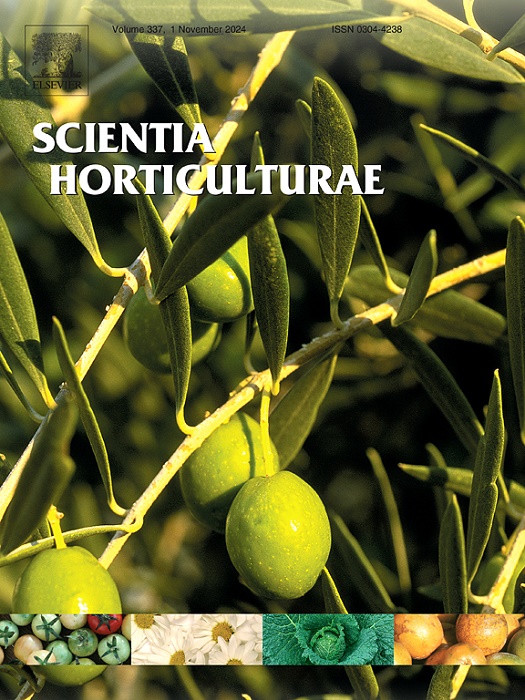Genome-wide identification of the pigment formation-regulating CYP450 family gives new insights into color improvement in Bougainvillea
IF 3.9
2区 农林科学
Q1 HORTICULTURE
引用次数: 0
Abstract
Bougainvillea is a popular ornamental plant, with modification of flower color is a primary breeding objective. Flower color can be attributed to three classes of pigment: flavonoids, carotenoids, and betalains. The cytochrome P450 monooxygenase gene family plays important roles in pigment biosynthesis. In Bougainvillea, although the CYPs involved in betalains biosynthesis has been reported, the CYPs related to flavonoids and carotenoids biosynthesis have not been characterized. Here, whole-genome analyzes identified 270 BbCYPs in Bougainvillea, which were divided into eight clans via phylogenetic analysis. By exploring the structure, physicochemical properties, chromosome localization and motif composition of BbCYPs, as well as evolutionary relationships with CYPs in other plants, we preliminarily screened 13 potential BbCYPs related to pigment biosynthesis. The expression levels of these genes except BbCYP1, at different developmental stages showed an upward trend. Correlation analysis results indicated that betalains and flavonoids may play major roles in Bougainvillea × buttiana ‘Mrs Butt’ bracts color formation. Among 13 BbCYPs, the BbCYP40 and BbCYP220 genes exhibited the strongest correlation with betalains and flavonoids, respectively. BbCYP85 gene exhibited stronger correlation with carotenoids than BbCYP162 gene. These findings provide valuable genetic resources for improving Bougainvillea bract color.
求助全文
约1分钟内获得全文
求助全文
来源期刊

Scientia Horticulturae
农林科学-园艺
CiteScore
8.60
自引率
4.70%
发文量
796
审稿时长
47 days
期刊介绍:
Scientia Horticulturae is an international journal publishing research related to horticultural crops. Articles in the journal deal with open or protected production of vegetables, fruits, edible fungi and ornamentals under temperate, subtropical and tropical conditions. Papers in related areas (biochemistry, micropropagation, soil science, plant breeding, plant physiology, phytopathology, etc.) are considered, if they contain information of direct significance to horticulture. Papers on the technical aspects of horticulture (engineering, crop processing, storage, transport etc.) are accepted for publication only if they relate directly to the living product. In the case of plantation crops, those yielding a product that may be used fresh (e.g. tropical vegetables, citrus, bananas, and other fruits) will be considered, while those papers describing the processing of the product (e.g. rubber, tobacco, and quinine) will not. The scope of the journal includes all horticultural crops but does not include speciality crops such as, medicinal crops or forestry crops, such as bamboo. Basic molecular studies without any direct application in horticulture will not be considered for this journal.
 求助内容:
求助内容: 应助结果提醒方式:
应助结果提醒方式:


